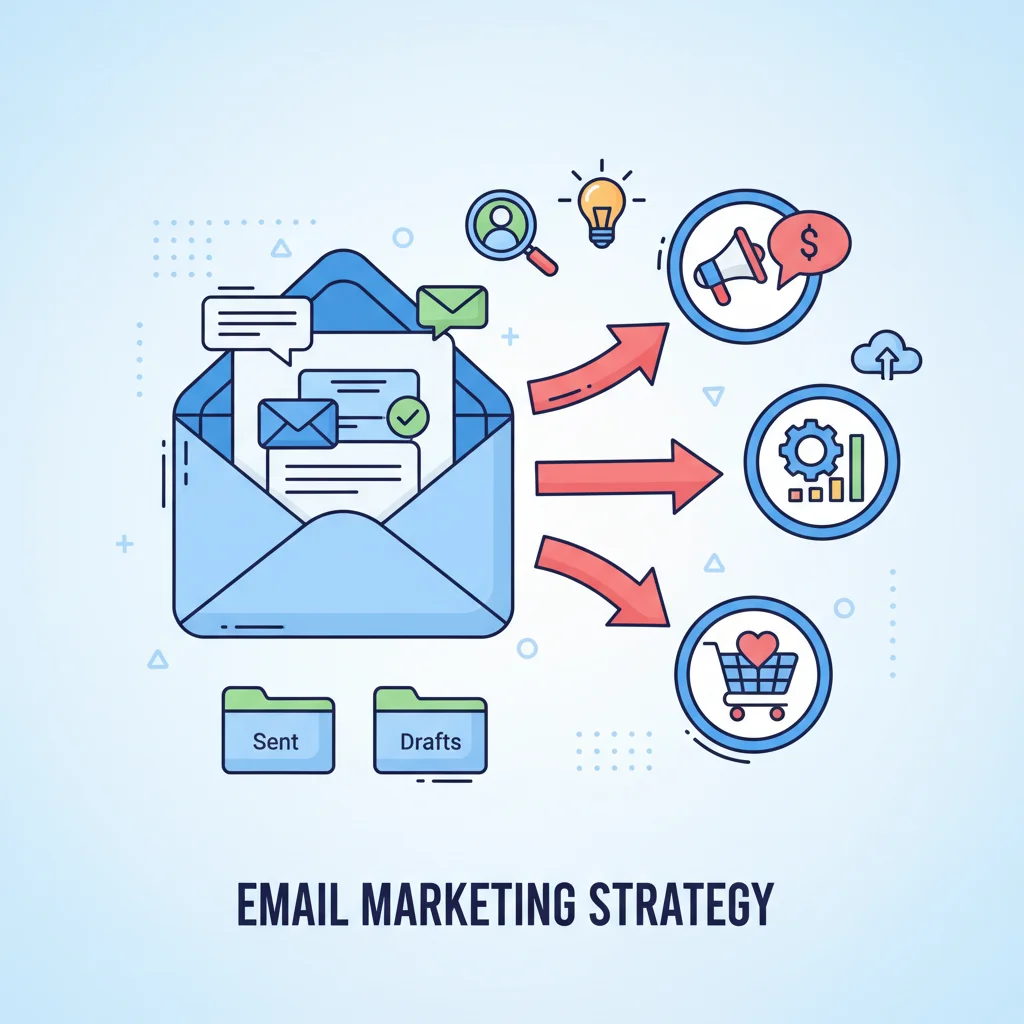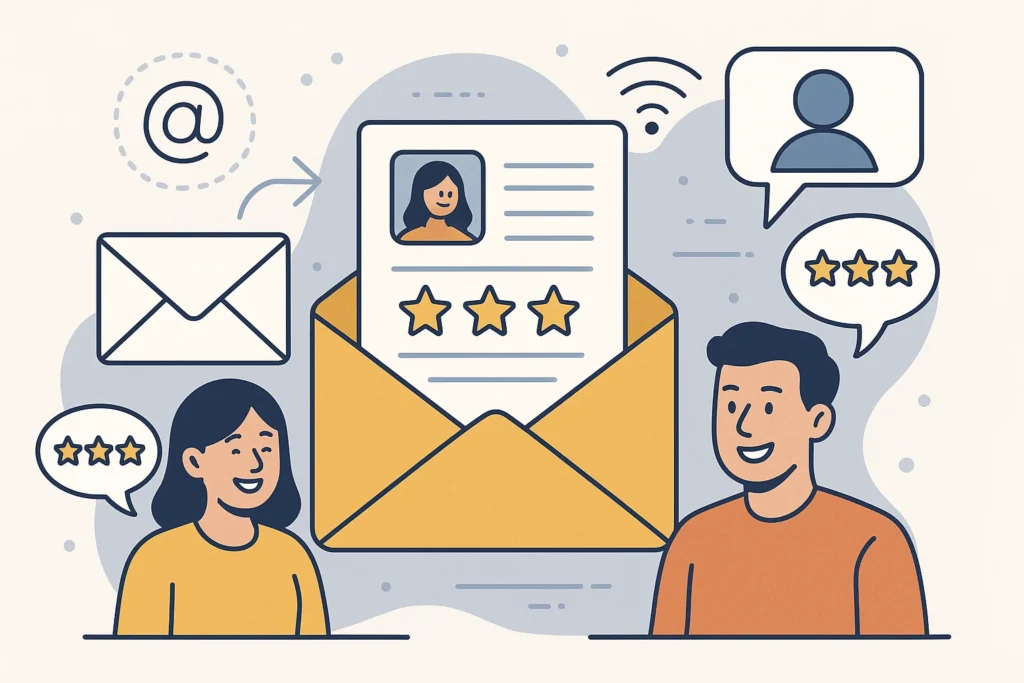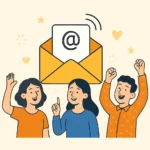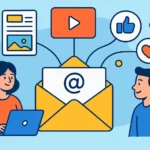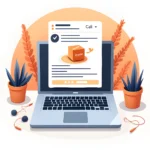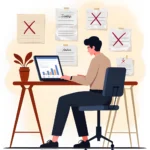Now Reading: 10 Proven Increase Email Click-Through Rate Strategies That Convert
-
01
10 Proven Increase Email Click-Through Rate Strategies That Convert
10 Proven Increase Email Click-Through Rate Strategies That Convert
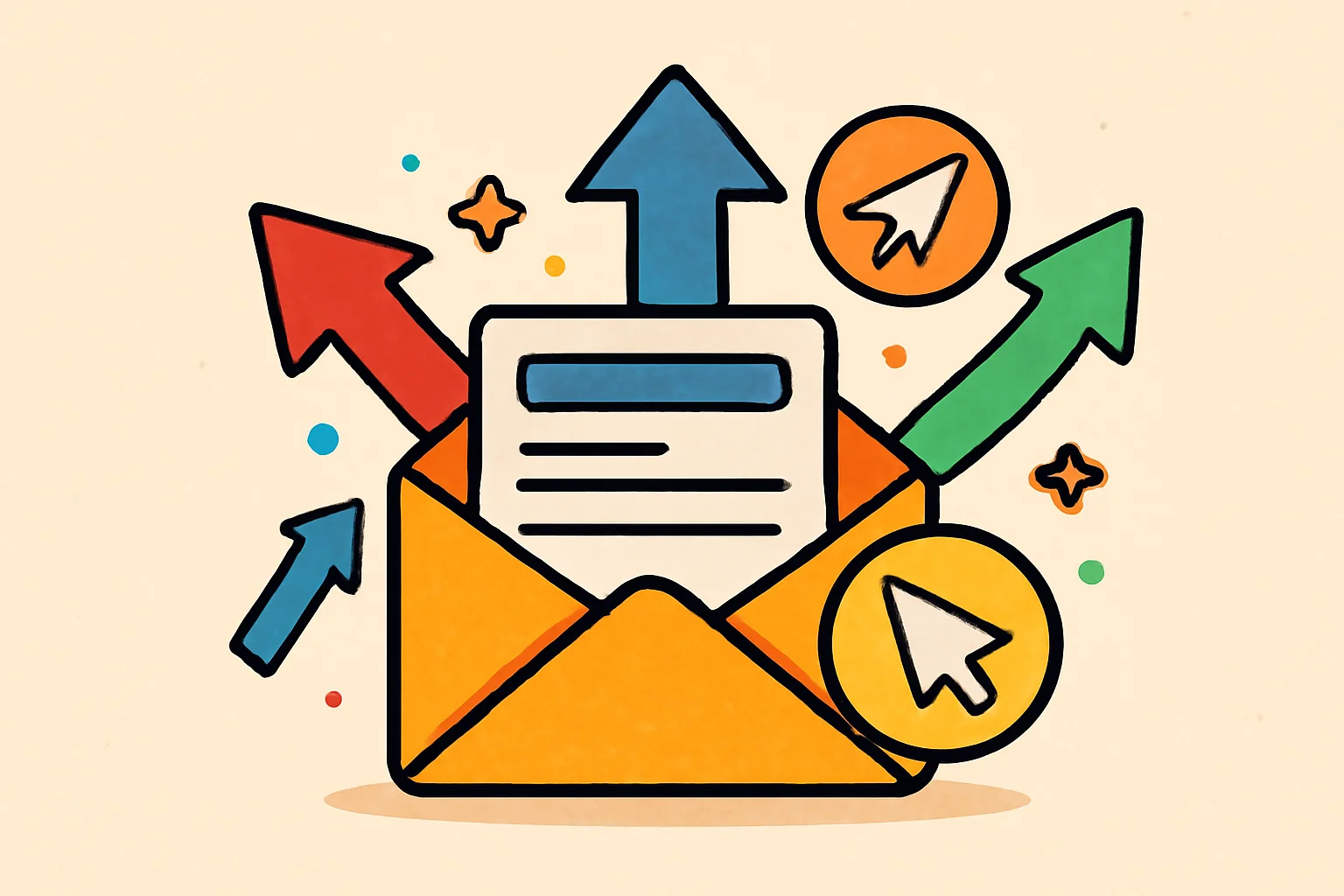
Ever sent an email campaign that barely got any clicks? You’re not the only one staring at those depressing metrics. Low click-through rates don’t just hurt your ego-they’re killing your conversion potential and wasting your marketing budget. But here’s the good news: implementing the right increase email click-through rate strategies can transform those unopened messages into your most powerful conversion tool.
Key Takeaways
- Personalize beyond first names – Use behavioral data to deliver relevant content
- Create compelling, benefit-focused CTAs – Make buttons stand out with action-oriented language
- Segment your audience for more targeted messaging that resonates
- Optimize for mobile devices since over 60% of emails are read on smartphones
- Test different elements including send times, button colors, and email length
- Establish a clear email hierarchy with one primary call-to-action
- Use social proof to build trust and encourage clicks
The Power Of Personalization
Gone are the days when slapping a first name in the subject line counted as “personalization.” If you’re serious about increasing your email click-through rates, you need to go deeper.
Behavioral Personalization
I’ve found that emails triggered by specific user behaviors perform up to 3x better than generic broadcasts. When someone visits a particular product page but doesn’t purchase, sending them an email specifically about that product shows you’re paying attention.
Here’s how I approach behavioral personalization:
- Track which links subscribers click in previous emails
- Note which products they’ve viewed on your website
- Monitor past purchase history to suggest complementary items
- Acknowledge their engagement level (active vs. inactive)
One client saw their click-through rate jump from 2.1% to 6.8% just by implementing behavior-based email flows instead of generic newsletters. That’s a 224% improvement!
Dynamic Content Blocks
Why send the same email to everyone when you can customize sections based on subscriber data? Dynamic content blocks let you show different images, offers, or text to different segments of your list.
For example:
- Show men’s products to male subscribers and women’s products to female subscribers
- Display different testimonials based on the subscriber’s industry
- Feature different benefits based on previous engagement patterns
This approach feels almost magical to subscribers-like you’re reading their minds. And that feeling translates directly into higher click-through rates.
Useful Articles:
Crafting CTAs That Demand Clicks
Your call-to-action is arguably the most important element for increasing email click-through rates. Yet most marketers slap on a generic “Click Here” button and call it a day. Big mistake.
Action-Oriented Language
The words on your CTA button should create immediate desire and urgency. I always use specific, benefit-focused language that tells subscribers exactly what they’ll get when they click.
| Instead of | Use |
|---|---|
| Learn More | Get My Free Template |
| Buy Now | Claim 50% Discount |
| Click Here | Reserve Your Spot |
| Sign Up | Start Saving Today |
| Submit | See Your Results |
Notice how the options on the right make it clear what value awaits on the other side of that click? That clarity drives action.
Visual Optimization
Your CTA needs to visually pop from the rest of your email. Some techniques I’ve tested with great success:
- Use a button color that contrasts with your email’s color scheme
- Add white space around your CTA so it stands alone
- Make buttons large enough to easily tap on mobile (at least 44×44 pixels)
- Position your primary CTA above the fold so no scrolling is needed
- Add subtle animation or hover effects for desktop users
One surprising trick? Adding a small arrow to your button can increase clicks by up to 26%. It subconsciously directs the eye and suggests forward motion.
Strategic Segmentation
Sending the same email to your entire list is like shouting in a crowded room-you might get some attention, but most people will ignore you because the message isn’t relevant to them.
Segment By Engagement Level
I divide my email lists into at least three engagement categories:
- Super-engaged – These subscribers open and click regularly. They deserve your best offers and most frequent communication.
- Moderately engaged – They open sometimes but rarely click. These folks need more compelling reasons to take action.
- Disengaged – Haven’t opened in months. These require re-engagement campaigns with strong subject lines and irresistible offers.
By tailoring my messaging to each group, I’ve seen click-through rates increase by up to 50% in the moderate segment and even brought back 15% of the disengaged subscribers.
Segment By Purchase History
Nothing boosts click-through rates like relevance. When I segment emails based on previous purchases, I can recommend:
- Complementary products that enhance what they already own
- Replenishment reminders when consumable products are likely running low
- Upgrades when new versions of their purchases become available
A sporting goods retailer I worked with increased their click-through rate by 82% by simply segmenting their list by sport interest rather than sending generic “sale” emails to everyone.
Useful Articles:
Mobile Optimization Essentials
With over 60% of emails now opened on mobile devices, optimizing for smartphones isn’t optional-it’s mandatory for increasing email click-through rates.
Responsive Design Fundamentals
Your emails must look great and function perfectly across all devices. Here’s my mobile optimization checklist:
- Single-column layouts that adapt to screen size
- Large, tap-friendly buttons (minimum 44×44 pixels)
- Font size of at least 14px for body text, 22px for headlines
- Compressed images that load quickly on mobile data
- Short paragraphs (3-4 lines maximum)
- Adequate spacing between clickable elements
I once reduced an email’s image sizes and simplified its layout, cutting load time in half-and the click-through rate jumped by 31% on mobile devices.
Preview Before Sending
Always test your emails on multiple devices before hitting send. I use tools like Litmus or Email on Acid to preview how my emails will look across:
- Different email clients (Gmail, Outlook, Apple Mail)
- Various devices (iPhone, Android phones, tablets)
- Different screen sizes
This extra step has saved me countless times from sending emails with broken layouts or tiny, unclickable buttons that would have tanked my click-through rates.
The Art Of Email Testing
If you’re not consistently testing elements of your emails, you’re leaving clicks (and revenue) on the table. A/B testing is your secret weapon for increasing email click-through rates.
What To Test
I prioritize testing these elements, in order of impact:
- Call-to-action – Button color, text, size, and placement
- Email layout – Single vs. multiple columns, image placement
- Content length – Short and direct vs. longer and detailed
- Send timing – Day of week and time of day
- Personalization level – Basic vs. advanced personalization
Start with your CTA since it directly influences clicks. Even small changes can yield big results-I once increased clicks by 21% just by changing a button from green to orange.
How To Test Properly
For valid test results, follow these guidelines:
- Test only ONE element at a time
- Use a large enough sample size (at least 1,000 subscribers per variation)
- Run your test for at least 24 hours to account for different time zones
- Declare a winner only when results are statistically significant
I use a 75/25 split when testing-75% gets the winning version from previous tests, while 25% gets the new variation I’m testing. This approach minimizes risk while still providing reliable data.
Useful Articles:
Email Design Hierarchy
The structure of your email plays a crucial role in guiding subscribers toward your desired action. A clear visual hierarchy increases email click-through rates by making it obvious what to do next.
The Inverted Pyramid Method
I structure most of my emails following the inverted pyramid method:
- Attention-grabbing header – Usually an image with text overlay or a bold headline
- Supporting information – Benefits, features, or problem-solution content
- Clear call-to-action – The natural conclusion to the information above
This structure naturally funnels the reader’s eye toward your CTA, making them more likely to click.
One Primary Goal
Each email should have ONE main objective. When I include multiple CTAs, I make sure there’s a clear hierarchy:
- Primary CTA – Stands out visually, appears above the fold
- Secondary CTAs – Less prominent, appears later in the email
In a recent campaign, I reduced the number of CTAs from four to one and saw the click-through rate increase by 42%. Fewer options meant less decision fatigue and more action.
The Trust Factor: Social Proof
People are more likely to click when they trust you. Social proof is one of the most powerful ways to build that trust and increase email click-through rates.
Types Of Social Proof
I incorporate these trust elements into my emails:
- Customer testimonials – Short quotes from satisfied customers
- Review snippets – Star ratings and brief review excerpts
- Usage statistics – “Join 10,000+ marketers who’ve improved their CTR”
- Media mentions – “As featured in Forbes, Inc, etc.”
- Case study results – “Company X increased sales by 37%”
The most effective approach? Matching the social proof to the specific action you want subscribers to take. If you’re promoting a course, include testimonials specifically about that course.
Placement Matters
I’ve found that placing social proof immediately before your CTA can increase clicks by up to 15%. It provides that final reassurance that clicking is a good decision.
For example:
“This template helped me double my response rate in just one week!” – Sarah T.
[Get Your Free Template Now]
This sequence works because it follows the natural thought process: “Others had success with this → I want that success too → I should click to get it.”
Compelling Content That Drives Action
The body content of your email plays a huge role in whether people make it to your CTA. Boring, generic content kills click-through rates faster than almost anything else.
The AIDA Formula
I structure many of my emails using the AIDA formula:
- Attention – Open with something surprising or intriguing
- Interest – Build on that opening with relevant information
- Desire – Create emotional connection to your offer
- Action – Direct them clearly to your CTA
This classic copywriting framework works amazingly well for emails. Here’s a quick example:
“Did you know that most email marketers are leaving 50% of their potential clicks untapped? (Attention)
Our analysis of 1,000+ campaigns revealed that simple formatting changes can double your click-through rates without changing your offer. (Interest)
Imagine what your results would look like if twice as many subscribers engaged with every email you sent. (Desire)
Download our free CTR optimization checklist to implement these changes in your next campaign. (Action)”
The Power Of Storytelling
Stories capture attention and create emotional investment. I often use mini-stories in emails to increase click-through rates:
- Customer success stories
- Behind-the-scenes narratives
- Problem-solution scenarios
- Before-and-after transformations
One of my highest-performing emails started with a 3-sentence story about a client who was about to give up on email marketing before discovering our strategy. That email got a 12.4% CTR-nearly 5x our average at the time.
Timing And Frequency Optimization
When you send your emails matters almost as much as what’s in them. Optimizing your timing can significantly increase email click-through rates.
Finding Your Sweet Spot
The “best time to send emails” varies wildly by industry and audience. Instead of following generic advice, I analyze my own data:
- Which days of the week get the highest engagement?
- What time of day do subscribers most actively click?
- How does timing differ between audience segments?
For a B2B client, we discovered that Tuesday at 10:30 AM consistently outperformed other send times by 27%. For a fitness brand, Sunday evening emails got 34% more clicks than any weekday sends.
Frequency That Respects Your Audience
Sending too many emails leads to fatigue and unsubscribes. Sending too few means missed opportunities. Finding the right balance is crucial.
I recommend:
- Starting with a moderate frequency (1-2 emails per week)
- Segmenting based on engagement (more emails to engaged subscribers)
- Providing frequency options during signup or in preference centers
- Watching unsubscribe rates closely for signs of fatigue
When I implemented a preference center allowing subscribers to choose their own frequency, click-through rates increased by 19% across the board-even though some chose to receive fewer emails.
Subject Lines That Support Click-Through
While subject lines directly impact open rates, they also set expectations that affect click-through rates. The right subject line primes subscribers to take action once they open.
Promise-Delivery Alignment
Your subject line makes a promise. Your email content delivers on it. Your CTA completes the journey. When these three elements align perfectly, click-through rates soar.
For example:
- Subject: “5 Templates That Will Double Your Response Rate”
- Email content: Brief explanation and preview of the templates
- CTA: “Download All 5 Templates”
This alignment creates a seamless experience that naturally leads to clicking.
Curiosity Gaps
I sometimes use curiosity-based subject lines that can only be satisfied by clicking:
- “The email strategy most marketers overlook (see example)”
- “We analyzed 1,000 emails and found this surprising pattern”
- “This small change increased our clicks by 47%”
The key is to deliver enough information in the email to satisfy the initial curiosity but require a click for the complete payoff.
Implementing these increase email click-through rate strategies has transformed my email marketing results, and they’ll do the same for you. Start with one or two techniques that seem most relevant to your current challenges, measure your results, and gradually incorporate more as you go. Your subscribers are waiting for emails worth clicking-now you know exactly how to deliver them.


